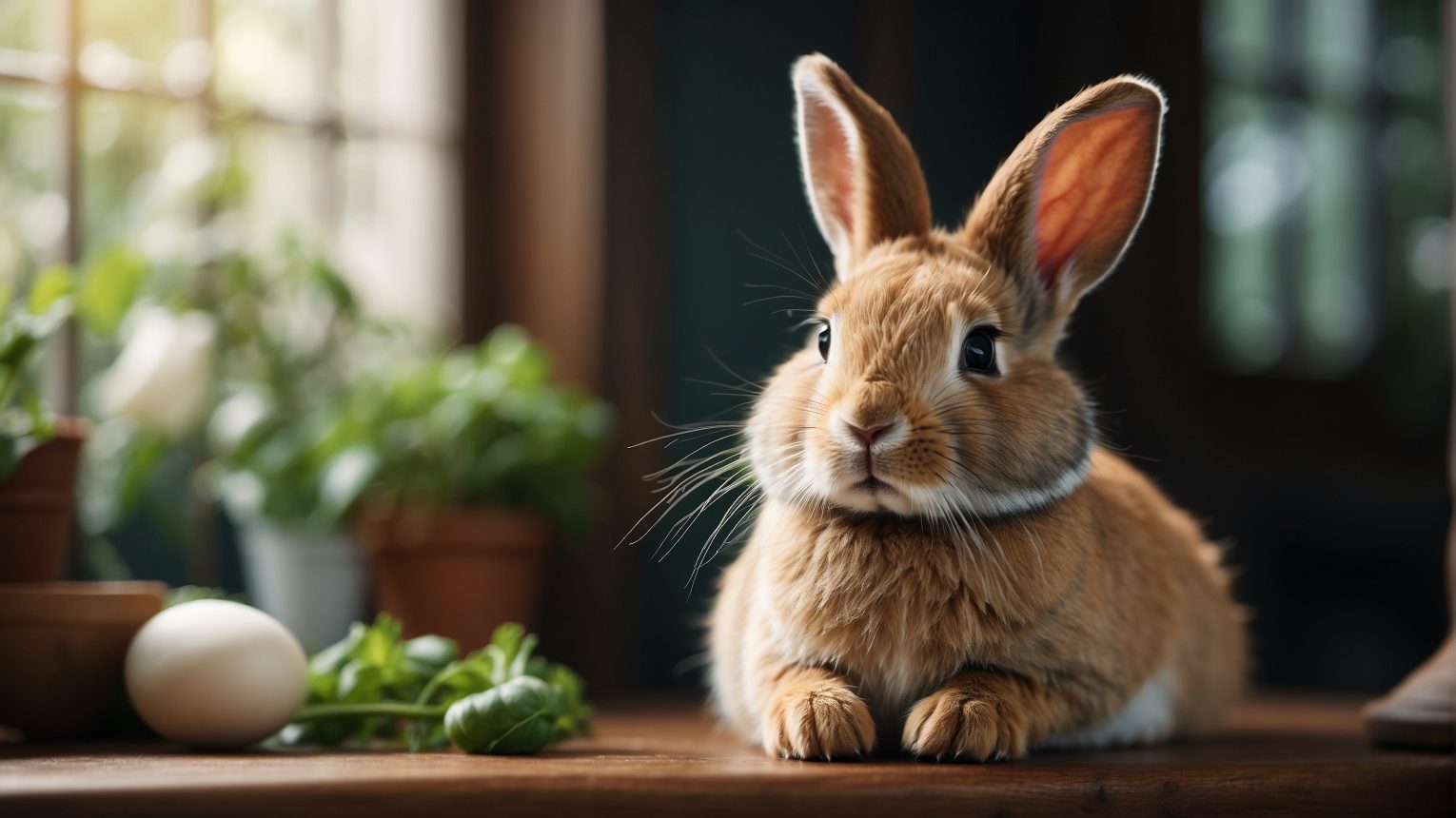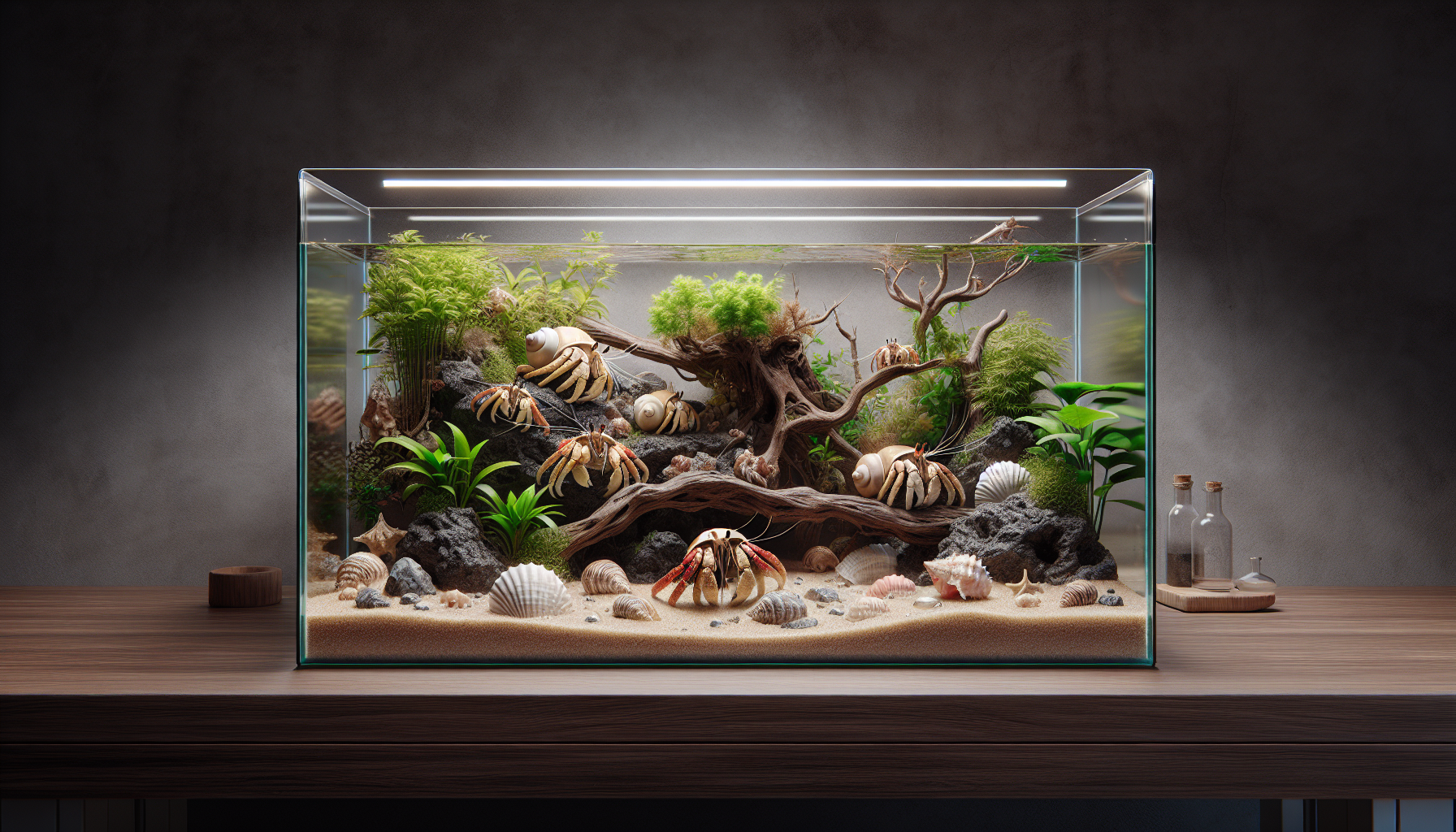Understanding Your Pet Rabbit’s Basic Needs
When caring for your pet rabbit at home, it’s crucial to understand and fulfill their basic needs to ensure their well-being and happiness. Rabbits are unique animals with specific requirements that differ from other pets, so it’s essential to educate yourself on how to properly care for them.
First and foremost, rabbits need a diet rich in hay, fresh vegetables, and a small amount of pellets to maintain good health. It’s important to provide them with a balanced diet to prevent digestive issues and keep their teeth properly worn down. You can learn more about essential rabbit diet tips here.
In addition to their diet, rabbits require a safe and comfortable living environment. This includes an indoor rabbit habitat that provides ample space for them to move around, as well as a designated area for them to retreat and feel secure. Proper housing is crucial for their well-being, and you can find tips on creating an ideal indoor rabbit habitat here.
Exercise and mental stimulation are also essential for rabbits. They need opportunities to hop, run, and play to maintain their physical and mental health. Providing enrichment activities and bunny exercise routines can help keep them active and engaged. You can explore rabbit grooming techniques here.
Lastly, it’s crucial to be aware of common rabbit health issues and how to recognize and prevent them. Regular grooming and health checks can help you identify any potential issues early on and seek proper veterinary care when needed. Understanding and fulfilling your pet rabbit’s basic needs is the foundation for providing them with a happy and healthy life at home.
Essential Diet and Nutrition for a Healthy Rabbit
Providing your pet rabbit with a well-balanced diet is crucial for their overall health and well-being. A proper rabbit diet consists of high-quality hay, fresh vegetables, and a limited amount of pellets. Hay should make up the majority of their diet and should be available at all times to support their digestive system and dental health. Fresh, leafy greens such as kale, spinach, and romaine lettuce are excellent choices for providing essential nutrients to your rabbit. It’s important to introduce new vegetables gradually and monitor their digestive response to each type.
When it comes to pellets, opt for high-fiber, timothy-based pellets to supplement their diet. However, pellets should only make up a small portion of their daily food intake to prevent obesity and other health issues. Additionally, it’s essential to avoid feeding your rabbit sugary treats, as they can disrupt their digestive system and lead to health problems.
Water is another critical component of a rabbit’s diet. Fresh, clean water should be available to your rabbit at all times, either through a water bottle or a heavy, tip-proof bowl. Ensure that the water source is regularly replenished to keep it fresh and appealing to your rabbit.
For more detailed information on rabbit diet tips and nutritional requirements, you can refer to reliable sources such as the House Rabbit Society’s guide on rabbit diet here. Following these dietary guidelines and providing your rabbit with a balanced and nutritious diet will contribute to their overall health and happiness.

Creating the Ideal Rabbit Habitat at Home
Designing a suitable indoor rabbit habitat is essential for ensuring your pet rabbit’s well-being and comfort. When setting up their living space, consider the following factors to create a safe and enriching environment for your rabbit.
First, provide ample space for your rabbit to move around and exercise. A spacious enclosure allows them to hop, stretch, and explore, contributing to their physical and mental stimulation. The enclosure should be large enough to accommodate a litter box, food and water bowls, and space for them to hide or rest comfortably.
Consider the flooring of the habitat. Solid-bottom enclosures are preferable to wire-bottom ones, as wire flooring can be harsh on a rabbit’s sensitive feet and may lead to injuries. A layer of rabbit-safe bedding, such as hay or straw, can offer comfort and support natural digging behaviors.
Offering hiding spots and shelters within the habitat is crucial to help rabbits feel secure. Providing tunnels, boxes, or cozy hideaways allows them to retreat and relax, reducing stress and anxiety. Additionally, incorporating safe and enriching toys, such as chew blocks and tunnels, promotes mental stimulation and prevents boredom.
Lighting and ventilation are also important considerations. Ensure that the habitat is well-lit during the day and positioned away from direct sunlight to prevent overheating. Adequate ventilation is necessary to maintain a fresh and comfortable environment for your rabbit.
For more detailed guidance on creating an ideal indoor rabbit habitat, you can explore resources such as The Spruce Pets’ article on indoor rabbit housing here. By carefully designing and maintaining an appropriate living space for your pet rabbit, you can contribute to their overall well-being and happiness at home.
Exercise and Enrichment: Keeping Your Rabbit Active
Keeping your pet rabbit physically and mentally active is crucial for their overall well-being. Rabbits are naturally active animals, and providing them with opportunities for exercise and enrichment is essential to maintain their health and happiness.
One way to keep your rabbit active is by allowing them time and space to hop and explore. Providing a larger enclosed area, either indoors or outdoors, gives them the freedom to move around and engage in natural behaviors such as running, jumping, and exploring their surroundings. You can set up a safe and secure outdoor playpen for your rabbit to enjoy supervised outdoor time, ensuring they are protected from potential hazards.
Enrichment activities are also beneficial for keeping your rabbit mentally stimulated. Introducing toys and interactive items such as puzzle feeders, tunnels, and chew toys can provide mental challenges and prevent boredom. Rotating their toys regularly helps maintain their interest and prevents them from getting bored with the same items.
Incorporating different textures and materials in their environment can also offer enrichment. Providing cardboard boxes, untreated wood, or safe, natural materials for them to chew on and explore can keep them engaged and prevent destructive behaviors. It’s essential to ensure that any items introduced are safe for rabbits and free from harmful chemicals or small, ingestible parts.
Regular interaction and bonding time with your rabbit are equally important for their well-being. Spending time with your rabbit, gently petting and grooming them, helps build a strong bond and trust between you and your pet. However, it’s essential to respect their boundaries and allow them to initiate and control the level of interaction.
For additional insights into bunny exercise routines and enrichment ideas, you can explore resources such as the House Rabbit Society’s guide on exercising your rabbit here. By providing ample opportunities for exercise, mental stimulation, and social interaction, you can ensure that your pet rabbit remains active, healthy, and content in their home environment.
Grooming Essentials for Your Pet Rabbit
Proper grooming is essential for maintaining the health and well-being of your pet rabbit. Regular grooming routines help prevent fur matting, reduce the risk of hairballs, and allow you to monitor your rabbit’s overall condition. Here are some essential grooming practices to keep your rabbit looking and feeling their best:
Brushing your rabbit’s fur is crucial to remove loose hair, prevent matting, and distribute natural oils. Use a soft-bristled brush or comb designed for rabbits to gently groom their fur. Regular brushing, especially for long-haired breeds, helps minimize shedding and keeps their coat in good condition. You can learn more about rabbit grooming techniques here.
Trimming your rabbit’s nails is another important aspect of grooming. Overgrown nails can cause discomfort and difficulty walking for your rabbit. Use specialized nail clippers for small animals and carefully trim the tips of their nails, avoiding the quick (blood vessel). If you’re unsure about nail trimming, seek guidance from a veterinarian or a professional groomer.
Cleaning your rabbit’s ears and checking their teeth are also part of a comprehensive grooming routine. Gently wipe around the outer ear area with a damp cloth to remove any dirt or wax buildup. Regularly inspecting your rabbit’s teeth for signs of overgrowth, malocclusion, or dental issues is crucial for their dental health. If you notice any abnormalities, seek veterinary attention promptly.
Bathing your rabbit should be done sparingly, as rabbits are generally clean animals and may find baths stressful. If necessary, use a small amount of rabbit-safe shampoo and lukewarm water to gently clean soiled areas. Ensure thorough drying and a warm environment after bathing to prevent chilling.
By incorporating regular grooming into your rabbit care routine, you can ensure that your pet stays clean, comfortable, and healthy. Additionally, seeking guidance from reliable sources on rabbit grooming techniques and best practices can further enhance your skills in caring for your pet rabbit at home.
Recognizing and Preventing Common Rabbit Health Issues
Ensuring the health and well-being of your pet rabbit involves being vigilant about common health issues that may affect them. By recognizing the signs and symptoms of potential health problems, you can take proactive measures to prevent and address these issues effectively.
One common health concern for rabbits is dental problems, including overgrown teeth and malocclusion. These issues can arise if rabbits don’t have adequate opportunities to chew and wear down their teeth. Regularly monitoring your rabbit’s eating habits and ensuring access to appropriate chew toys and fibrous foods can help prevent dental issues. If you notice any changes in their eating patterns or signs of discomfort, seeking veterinary care is crucial.
Gastrointestinal stasis, also known as GI stasis, is another prevalent health issue in rabbits. It involves the slowing or cessation of normal digestive processes and can result from factors such as inadequate diet, stress, or dehydration. Recognizing the early signs of GI stasis, such as reduced or absent fecal output and lethargy, is essential. Providing a diet rich in hay, encouraging hydration, and promoting a stress-free environment can help prevent GI stasis.
Skin problems and parasites, such as fur mites and fleas, can also affect rabbits. Regularly inspecting your rabbit’s fur and skin for any signs of irritation, hair loss, or external parasites is important. Maintaining a clean living environment and practicing good hygiene can help prevent skin issues. If necessary, consult with a veterinarian for appropriate treatment options.
Respiratory infections and dental abscesses are additional health concerns that may require prompt attention. Being observant of any changes in your rabbit’s breathing patterns, nasal discharge, or signs of discomfort can aid in early detection and treatment of respiratory issues. Regular dental checks can help prevent and address dental abscesses, which can be painful and impact your rabbit’s overall well-being.
For comprehensive information on recognizing and preventing common rabbit health issues, you can refer to reputable sources such as the House Rabbit Society’s guide on rabbit health here. By staying informed and attentive to your rabbit’s health, you can actively contribute to their long-term well-being and provide them with a happy and healthy life at home.

Socialization and Bonding: Interacting with Your Pet Rabbit
Building a strong bond and fostering socialization with your pet rabbit is a rewarding aspect of caring for them at home. Rabbits, despite their small size, are social animals that thrive on companionship and interaction with their human caregivers.
Spending quality time with your rabbit on a daily basis is essential for strengthening your bond. Gently petting and stroking your rabbit while they are relaxed can help establish trust and affection. However, it’s crucial to respect their body language and boundaries, allowing them to initiate and control the level of interaction.
Introducing your rabbit to a variety of stimuli and experiences can contribute to their socialization. Exposing them to different sounds, smells, and environments in a controlled and safe manner can help them adapt to new situations and reduce anxiety. Additionally, providing them with safe, enriching toys and activities can promote mental stimulation and prevent boredom.
Consider introducing your rabbit to other compatible pets if they show an interest in socializing with them. Supervised interactions with other animals, such as gentle dogs or calm cats, can provide additional socialization opportunities for your rabbit. Always monitor their interactions closely to ensure the safety and well-being of all the animals involved.
For more insights on socialization and bonding with your pet rabbit, you can explore resources such as the House Rabbit Society’s guide on building a bond with your rabbit here. By nurturing a positive and enriching social environment for your pet rabbit, you can contribute to their overall happiness and well-being in your home.
Frequently Asked Questions (FAQs) on Rabbit Care at Home
1. What should I feed my pet rabbit at home?
It’s essential to provide your pet rabbit with a well-balanced diet consisting of high-quality hay, fresh vegetables, and a limited amount of pellets. Hay should make up the majority of their diet, with fresh greens and pellets supplementing their nutritional needs. Avoid sugary treats and prioritize fiber-rich, nutritious foods to maintain their health.
2. How much exercise does a pet rabbit need?
Pet rabbits require ample opportunities for exercise to maintain their physical and mental well-being. They should have access to a spacious enclosure for hopping and exploring, as well as interactive toys and enrichment activities for mental stimulation. Additionally, supervised outdoor playtime in a secure environment can contribute to their exercise needs.
3. How do I set up a comfortable living space for my pet rabbit at home?
When creating a living space for your pet rabbit, prioritize ample room for movement, safe flooring, hiding spots, and enriching toys. Solid-bottom enclosures with rabbit-safe bedding, such as hay or straw, provide comfort, while incorporating tunnels, boxes, and chew toys offers mental stimulation. Ensure proper lighting, ventilation, and a stress-free environment for your rabbit.
4. What are the common health issues to watch out for in pet rabbits?
Common health concerns for pet rabbits include dental problems, gastrointestinal stasis, skin issues, respiratory infections, and dental abscesses. It’s crucial to monitor their eating habits, provide appropriate chew toys, maintain a balanced diet, and conduct regular health checks to prevent and address these health issues effectively.
5. How do I groom and clean my pet rabbit at home?
Grooming your pet rabbit involves regular brushing to remove loose fur, trimming their nails, cleaning their ears, and monitoring their dental health. Bathing should be done sparingly, if necessary, using rabbit-safe shampoo and lukewarm water. By incorporating these grooming practices into your routine, you can ensure your rabbit stays clean, comfortable, and healthy.


